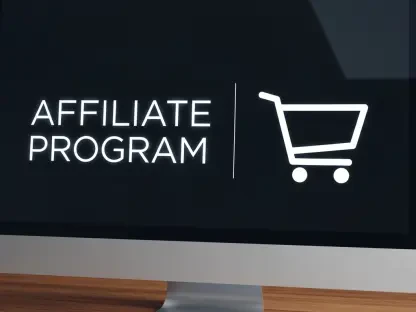Consumers now type a question and watch an AI compose a confident, conversational answer that compresses research, context, and nuance into a few brisk paragraphs while pushing blue links to the margins. The shift has felt fast because it bundled convenience with comprehension: speed plus synthesis beats a page of promising snippets. As AI assistants and AI-infused search interfaces become the first stop for everyday questions, a new discipline has taken shape to help brands show up inside those answers—Generative Engine Optimization.
The premise is straightforward but disruptive. Classic SEO tuned pages to rank on lists; GEO tunes knowledge so models can find, trust, and quote it. The moment an AI becomes the interface, the unit of competition changes from a page to an answer. That small linguistic twist hides a structural reordering of discovery, budgets, and measurement. It is changing what it means to be discoverable, and by extension, how credibility, recency, and originality get rewarded.
Why Answers Replaced Blue Links
Generative engines do not rank a dozen candidates and step back; they synthesize a response and, at best, gesture at sources with sparse citations. The experience trims friction for users who value context and directness, and it explains why survey data shows strong preference for AI search’s helpfulness and weekly use by a majority of consumers. The path to information now fragments across chat, social feeds, and blended search panes, reducing reliance on a single gatekeeper.
That fragmentation reframes competition. Instead of courting clicks with headlines and meta tags, brands need statements that models can lift cleanly and attribute with confidence. Clear definitions, step-by-step instructions, and benchmark tables travel well in synthesized answers. Moreover, the absence of predictable referral traffic forces marketers to judge success by mentions and quotations in AI outputs, not solely by sessions from blue links.
How GEO Works Under The Hood
Building Synthesized Answers And Citations
Models ingest content via crawling, APIs, and retrieval layers, then compose an answer by blending multiple fragments into a tidy narrative. Citations, when present, are selective and sometimes indirect, emphasizing representative sources over exhaustive lists. That dynamic privileges sources that read like ground truth—concise, unambiguous, and consistent across formats—because ambiguity adds risk to the model’s final composition.
For brands, the practical goal shifts from ranking position to being referenceable. Quotable blocks, crisp summaries, and canonical phrasing increase the odds of inclusion. When an engine must choose a definition or a data point, the source that makes attribution easiest tends to win.
Entities, Schema, And Machine Readability
GEO rewards machine-readable clarity. Schema markup, knowledge graph alignment, and precise entity disambiguation reduce confusion between similarly named products, companies, and concepts. Unambiguous fact statements—supported by consistent labels, units, and dates—help retrieval systems attach the right claims to the right entities.
Techniques that improve attribution confidence work like scaffolding for the model’s memory. Unique identifiers, harmonized naming across channels, and structured FAQs create durable anchors. The payoff is fewer misattributed mentions and more predictable appearances in synthesized responses.
Signals Of Authority, Trust, And Recency
Originality now matters more than volume. Engines favor sources that contribute unique datasets, reproducible benchmarks, and expert analyses over derivative summaries. Freshness signals—updated figures, change logs, and timestamped revisions—help models prioritize current information without overfitting to noise.
Provenance and consensus also shape selection. When expert content aligns with reputable third parties and independent citations, models treat it as lower-risk material. In practice, publishing primary research and transparent methods outperforms churning out high-frequency, generic posts.
Prompt-Led QA And Scenario Coverage
Because AI answers are dynamic, testing must mirror user behavior. Prompt suites—long, structured “mega prompts” that simulate real tasks—reveal whether a brand appears, how it is described, and which competitors dominate a topic. Iterating on those prompts across multiple engines surfaces gaps in entity clarity and content depth.
Feedback loops then tie insights back to production. Teams refine phrasing, add schema, and adjust structure to fix failures observed in chat transcripts. Over time, scenario coverage expands from simple FAQs to complex workflows, improving the brand’s presence in multi-step, conversational journeys.
Multiformat Inputs And Cross-Channel Signals
Models learn from more than web pages. Video transcripts, podcasts, product manuals, community threads, and vertical platforms enrich the context that engines draw on. Consistent messaging across those formats strengthens the probability that a model recognizes a claim and attributes it to the right source.
Cross-channel reinforcement acts as a confidence multiplier. When a definition appears identically in a whitepaper, a tutorial video, and a support article, the engine has multiple corroboration points. That coherence boosts inclusion even in interfaces that show few or no citations.
Signals From The Market
Demand has moved ahead of definitions. Job postings that reference GEO and related skills have risen while traditional SEO hiring flattened, suggesting organizations want practitioners who can shape content for LLM ingestion, retrieval, and citation. Titles vary—GEO, ASO, AEO—but the underlying competency looks consistent: make knowledge legible and quotable to machines.
Analysts have projected that AI will handle a substantial share of queries by 2028, redirecting significant value away from link-centric models. That forecast is not a clean curve; engines evolve in fits and starts, and measurement remains immature. Still, practitioners talk about an “AI visibility gap,” where brands either appear in answers or effectively vanish, and they are building playbooks to close it.
Where GEO Performs Today
Early implementations cluster where clarity is essential and ambiguity hurts users. Ecommerce teams structure FAQs so models can resolve compatibility and policy questions. B2B marketers publish authoritative whitepapers and distilled summaries that travel well across retrieval layers. Healthcare and fintech providers emphasize definitions, warnings, and compliance notes that models can quote verbatim without legal risk.
One consumer goods brand, for example, increased its mentions in AI answers by consolidating scattered guidance into a single, evidence-backed whitepaper, then mirroring the core claims in shorter explainers and structured FAQs. The lesson repeated across sectors: depth plus clarity beat thin volume, and structure is not decoration—it is the interface to the model.
Limits, Risks, And Friction
GEO does not eliminate the hard problems of AI. Hallucinations and misattributions still surface, and opaque sourcing makes remediation slower than in link-based search. Model volatility means that an answer that cited a brand last week may skip it today after an update or a context shift in retrieval.
Operational hurdles add drag. ROI tracking feels fuzzy when success is a mention, not a click. Teams face skill gaps in schema design, entity management, and prompt-led QA. Meanwhile, spam and manipulation tactics try to hijack synthesized narratives, prompting platforms to tighten filters and provenance checks. Regulation around accuracy, disclosure, and auditability is likely to formalize how attribution must work.
Strategy And The Road Ahead
A pragmatic approach is dual-engine. Maintain SEO hygiene—crawlability, performance, link equity—while building GEO capabilities focused on entity clarity and citability. Invest in knowledge graph maturity, consistent naming systems, and content patterns that produce unambiguous claims. Publish primary research and reproducible benchmarks to give engines something unique to cite.
Measurement needs updating as well. New tools test whether and how engines reference a brand, score entity precision, and track shifts after model updates. Continuous, prompt-led validation across assistants, blended SERPs, and vertical AI tools becomes the operational heartbeat. As multimodal inputs grow—voice, images, video—the brands that make their knowledge portable across formats will find more doors into synthesized answers from now through 2028.
Verdict
GEO changed the mechanics of visibility by moving competition from pages to answers, and it rewarded brands that made knowledge machine-readable, citable, and current. The strongest gains came from authoritative assets—original datasets, benchmarks, and expert guidance—backed by disciplined schema and entity management. Teams that adopted prompt-led QA and cross-channel reinforcement built resilience against model volatility and opaque sourcing.
The practical next steps were clear. Organizations should standardize entity naming, implement robust schema, and publish defensible research that engines can quote; deploy tools that test LLM visibility and monitor changes; and stand up governance to correct misstatements and track provenance. Investing in video transcripts, structured FAQs, and consistent definitions across channels expanded the surface area for retrieval. With AI handling an increasing share of queries through 2028, the brands that treated GEO as a strategic capability rather than a tactic had secured disproportionate visibility while keeping classic SEO healthy as a parallel lane.









